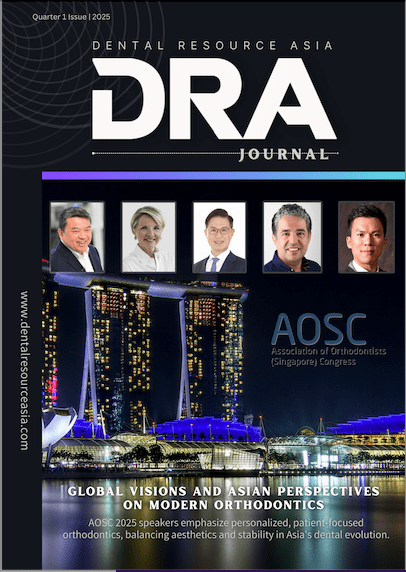Key Takeaways:
- VR haptic simulators improve manual dexterity and self-confidence in dental students during preclinical endodontic training.
- Stress levels among students were significantly reduced after using VR simulators.
- Students who trained with VR first felt better prepared for procedural challenges.
- Simulator-based performance metrics were comparable between groups, but VR offered additional benefits.
- Further research is needed to assess long-term impacts and optimal integration strategies.
Introduction: A New Approach to Dental Education
A recent study highlights the potential of virtual reality (VR) haptic simulators in enhancing dental education, particularly in preclinical endodontic training. Published in the International Endodontic Journal, the research was conducted collaboratively by institutions including the University of Eastern Finland, the University of Health Sciences, Ondokuz Mayıs University in Turkey, and Grande Rio University in Brazil. According to the findings, VR haptic simulators not only aid in skill acquisition but also contribute to stress reduction among students.
The study underscores the growing role of technology in modern dental education, where traditional methods are increasingly complemented by innovative tools. As noted in the article published on the University of Eastern Finland’s website, these simulators offer “more repetition and standardised feedback,” which are critical for developing essential psychomotor skills.
Study Design: Comparing Traditional and VR-Based Training
The research involved 40 dental students enrolled in preclinical endodontic training. Participants were randomly divided into two groups. One group began their training using VR haptic simulators before transitioning to artificial teeth, while the other followed a reverse sequence—starting with artificial teeth and then moving to VR simulators. Both groups received identical lectures and demonstrations on access cavity preparation, ensuring consistency in foundational knowledge.
To evaluate the effectiveness of each approach, researchers measured stress levels, manual dexterity, and self-assessed confidence before and after training. These assessments provided a comprehensive view of how VR haptic simulators influenced both technical skills and psychological factors.
Key Findings: Enhanced Skills and Reduced Anxiety
Students who started their training with VR haptic simulators demonstrated higher manual dexterity scores and reported greater self-assessed proficiency compared to those who began with artificial teeth. Additionally, anxiety levels were notably lower in this group during preclinical sessions. The study notes that these students “felt better prepared and more confident in performing access cavity preparations and managing procedural challenges.”
Interestingly, stress levels decreased in both groups after simulator practice, suggesting that VR technology has a calming effect regardless of the training sequence. However, the group that used VR first appeared to benefit more in terms of overall preparedness and confidence. Performance metrics on the simulators were similar between the two groups, indicating that VR does not compromise technical outcomes but rather enhances them through additional psychological advantages.
Implications for Dental Curricula
While the study highlights the immediate benefits of VR haptic simulators, the researchers emphasize the need for further investigation. Specifically, they call for studies exploring the long-term effects of VR integration and strategies for its optimal use in dental curricula. This cautious approach reflects the importance of balancing technological innovation with established educational practices.
As stated in the original article, “further research is needed to explore long-term effects and optimal integration strategies for VR simulators in dental curricula.” This acknowledgment underscores the evolving nature of dental education and the ongoing quest to refine teaching methodologies.
Conclusion: A Step Forward in Dental Training
The study provides compelling evidence for the value of VR haptic simulators in dental education, particularly in reducing stress and enhancing skill acquisition during preclinical training. By offering students a platform to practice repeatedly and receive standardized feedback, VR technology addresses some of the limitations of traditional methods.
However, as with any emerging tool, its full potential can only be realized through continued research and thoughtful implementation. For now, the findings suggest that VR haptic simulators are a valuable addition to the dental training toolkit, offering tangible benefits for both educators and students.
Source: University of Eastern Finland (UEF Viestintä)
Journal Reference: Usta, S. N., et al. (2025). A comparison of traditional and virtual reality haptic simulator approaches in preclinical endodontic training: Impacts on skill acquisition, confidence and stress. International Endodontic Journal. doi.org/10.1111/iej.14236.
The information and viewpoints presented in the above news piece or article do not necessarily reflect the official stance or policy of Dental Resource Asia or the DRA Journal. While we strive to ensure the accuracy of our content, Dental Resource Asia (DRA) or DRA Journal cannot guarantee the constant correctness, comprehensiveness, or timeliness of all the information contained within this website or journal.
Please be aware that all product details, product specifications, and data on this website or journal may be modified without prior notice in order to enhance reliability, functionality, design, or for other reasons.
The content contributed by our bloggers or authors represents their personal opinions and is not intended to defame or discredit any religion, ethnic group, club, organisation, company, individual, or any entity or individual.

